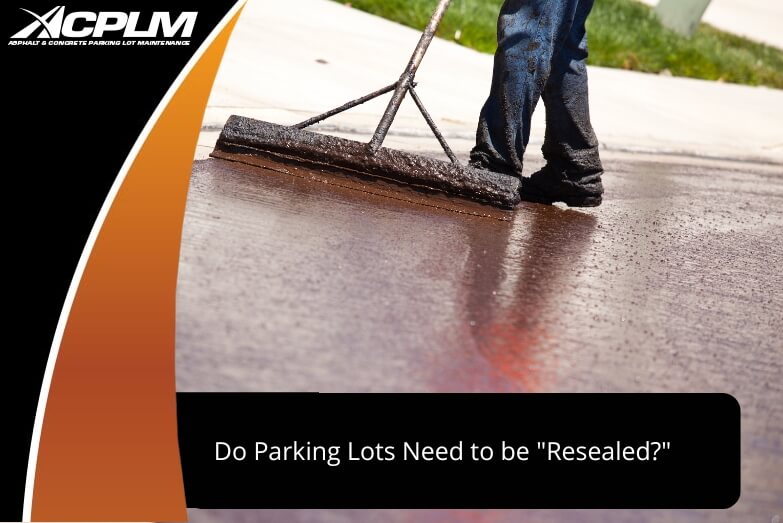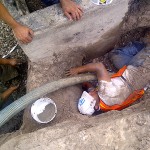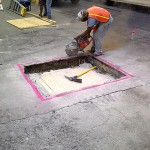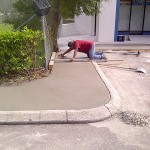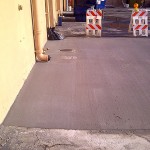
Laura Ingalls Wilder, author of the beloved Little House on the Prairie, tells of her first encounter with an asphalt pavement. She was on a wagon journey with her parents in 1894 that took them through Topeka.
“In the very midst of the city, the ground was covered by some dark stuff that silenced all the wheels and muffled the sound of hoofs. It was like tar, but Papa was sure it was not tar, and it was something like rubber, but it could not be rubber because rubber cost too much. We saw ladies all in silks and carrying ruffled parasols, walking with their escorts across the street. Their heels dented the street, and while we watched, these dents slowly filled up and smoothed themselves out. It was as if that stuff were alive. It was like magic.
Today, this dark, resilient material covers more than 94 percent of the paved roads in the United States; it’s the popular choice for driveways, parking lots, airport runways, racetracks, tennis courts, and other applications where a smooth, durable driving surface is required. Called at various times asphalt pavement, blacktop, tarmac, macadam, plant mix, asphalt concrete, or bituminous concrete, asphalt pavements have played an important role in changing the landscape and the history of the U.S. since the late 19th century.
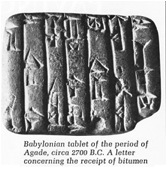
The first recorded use of asphalt as a road building material was in Babylon around 625 B.C., in the reign of King Naboppolassar. In A Century of Progress: The History of Hot Mix Asphalt, published by National Asphalt Pavement Association in 1992, author Hugh Gillespie notes that “an inscription on a brick records the paving of Procession Street in Babylon, which led from his palace to the north wall of the city, ‘with asphalt and burned brick.’”
We know that the ancient Greeks were familiar with asphalt and its properties. The word asphalt comes from the Greek “asphaltos”, meaning “secure.” The Romans changed the word to “asphaltus,” and used the substance to seal their baths, reservoirs, and aqueducts.
Many centuries later, Europeans exploring the New World discovered natural deposits of asphalt. Writing in 1595, Sir Walter Raleigh described a “plain” (or lake) of asphalt on the Island of Trinidad, off the coast of Venezuela. He used this asphalt for re-caulking his ships.
Laying the Foundation for Asphalt Roads
Despite these early uses of asphalt, several hundred years passed before European or American builders tried it as a paving material. What they needed first was a good method of road building.
Englishman John Metcalf, born in 1717, built 180 miles of Yorkshire roads. He insisted on good drainage, requiring a foundation of large stones covered with excavated road material to raise the roadbed, followed by a layer of gravel. Thomas Telford built more than 900 miles of roads in Scotland during the years 1803-1821. “He perfected the method of building roads with broken stones, laid to a depth according to the weight and volume of traffic it would have to carry,” Gillespie writes. Telford’s contemporary, John Loudon McAdam, taught himself engineering after being appointed a trustee of a Scottish turnpike. McAdam observed that it was the “native soil” that supports the weight of traffic, and that “while it is preserved in a dry state, it will carry any weight without sinking.” To construct his roads, McAdam used broken stone “which shall unite by its own angles so as to form a hard surface.” Later, to reduce dust and maintenance, builders used hot tar to bond the broken stones together, producing “tarmacadam” pavements.
Asphalt Roads Come to America

DeSmedt went on to pave Pennsylvania Avenue in Washington, DC, a project that included 54,000 sq. yds. paved with sheet asphalt from Trinidad Lake Asphalt. The durability of this pavement proved that the quality of the asphalt found in the Americas was as good as that imported from Europe.







